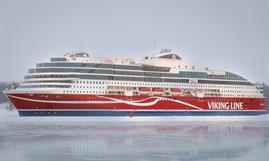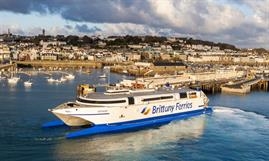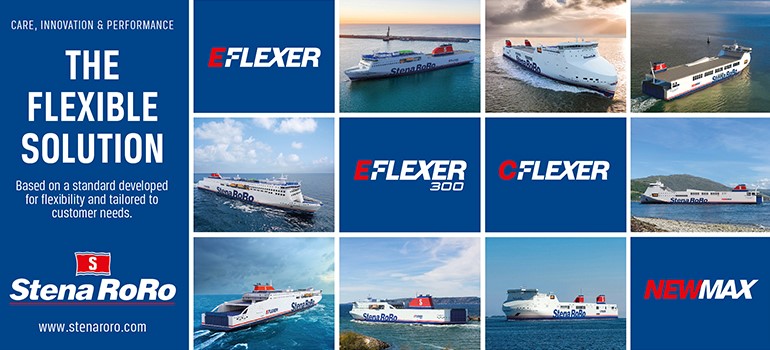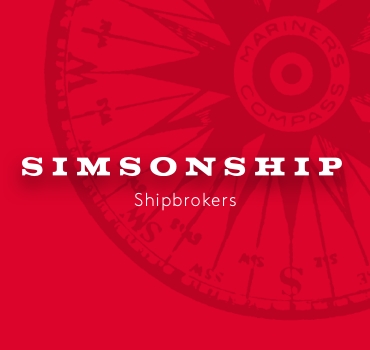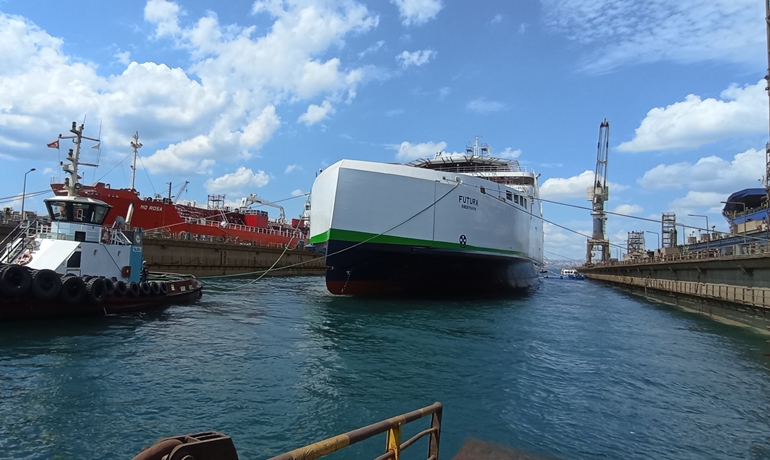
© Scandlines/Cemre
Construction of Scandlines’ zero direct emissions ferry FUTURA has entered the final phase
FerryThe construction of the electric FUTURA for Scandlines at the Cemre shipyard is entering its final phase. On 29 July 2024, the ship entered the floating dock to have the bottom cleaned and painted, among other things, and 10 August she headed out to sea again.
In addition to the painting work, the forward thruster was also fitted during the docking, while the aft thruster, which has been in the water since the launching in November 2023, was cleaned and painted.
The bottom and thrusters are painted with silicone paint so that the ship can glide energy-efficiently through the water.
During the dock stay, the bitts for the automatic mooring, which must fit exactly in the ferry berths, and the connection to the charging towers in the ports of Rødby, Denmark, and Puttgarden, Germany, were measured. As of September 2025, the large battery system of the ferry will be able to charge in just 12 minutes in both ports.
"These measurements must be very precise, as there is very little tolerance. That's why we make them in the dock and not while the ship is moving at the quay," says Rasmus Nielsen, Naval Architect at Scandlines.
All systems must be tested before heading to Denmark
FUTURA is now back at the fitting-out quay, where she must be completely finished. All auxiliary systems must be tested, and then she will go on a sea trial, where the SAT (Sea Acceptance Tests) can begin. Here, all systems of the ship are tested at full load under the supervision of the Danish Maritime Authority and Lloyd's Register.
"The SAT tests last one to two weeks, during which the ship is out sailing, with the possibility of changing crew morning and evening. This way, we can always have the craftsmen and technicians on board who are needed to make corrections and adjustments, instead of everyone being on board all the time," explains Rasmus Nielsen.
Once the SAT tests have been successfully completed and the ship has been delivered to Scandlines, FUTURA can begin the long journey home to Rødbyhavn in Denmark, where part of the future crew is at the helm.
"We are very much looking forward to putting our first emission-free ferry into operation on the Puttgarden-Rødby route. FUTURA is an investment in the future –for us as a ferry operator in general and, not least, as an important part of meeting our goal of zero emissions operation of the Puttgarden-Route route by 2030,' says Scandlines COO Michael Guldmann Petersen.
The ferry will be officially named at a ceremony in connection with its deployment on the Fehmarn Belt later in 2024.
FUTURA data:
Length: 147.4 m
Breadth: 25.4 m
Design draft: 5.30 m
Freight capacity: 66 freight units (abt. 1,200 lane metres)
Max. number of passengers: 140
Service speed: 16/10 knots
Crossing time: 45 minutes (as of 2025)
Battery system: 10 MWh
Charging time in port: 12 minutes (as of 2025)
Investment: 80 MEUR
© Shippax
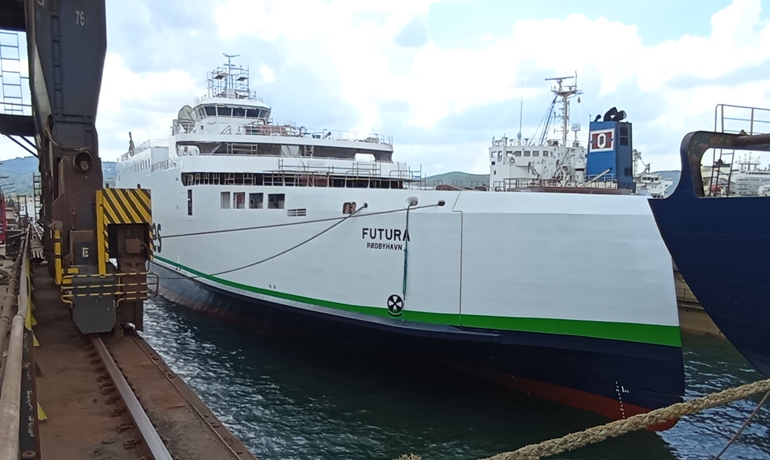
© Scandlines/Cemre
aug 19 2024
Most read
Not a Merry Christmas for CMAL and CalMac as two newbuilding ferries – GLEN ROSA and ISLE OF ISLAY - are further delayed
dec 22 2025


